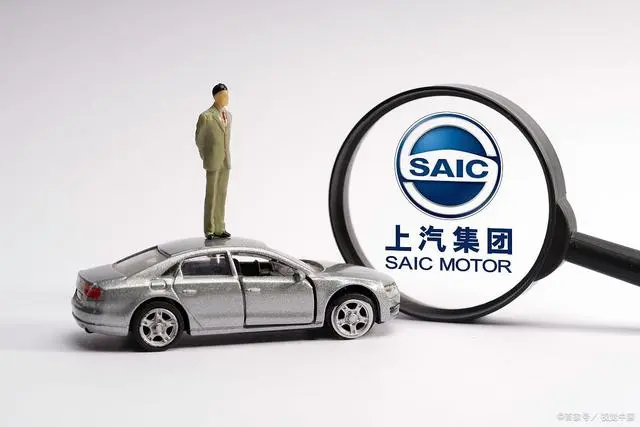Recently, SAIC Group released its third-quarter financial report, which revealed that the company’s 2023 plans, formulated in 2022, are falling significantly short of expectations. Achieving the ambitious target of 6 million in annual sales for two consecutive years seems increasingly challenging, and surpassing the 800 billion RMB revenue mark is nowhere in sight.
On October 26th, SAIC Group’s third-quarter financial report was published, showing that the company’s revenue for the first three quarters reached 523.42 billion RMB, a 0.77% year-on-year decline, with a net profit of 11.407 billion RMB, a 9.82% decrease. During the same period, the company sold 3.3774 million vehicles, a 10.42% drop compared to the previous year. In terms of revenue, the company has only achieved 65.42% of its annual plan for the first three quarters, and sales have reached just 56.29% of the annual sales target.
The significant 10%+ decline in sales is primarily due to poor sales of their joint venture vehicles, including SAIC Volkswagen, SAIC General Motors, and SAIC-GM-Wuling, among others. Furthermore, the company’s idle production capacity is steadily increasing.
01
As the largest domestic automotive manufacturer, SAIC Group finds itself in its most awkward year in terms of performance. Once a company that sold over 7 million vehicles annually, SAIC Group has seen a continuous decline in sales year after year.
In 2022, the company achieved an operating income of 744.063 billion RMB, a 4.59% year-on-year decrease, with a net profit of 16.118 billion RMB, a 34.30% decrease. Operating costs were 738.222 billion RMB, a 4.37% decrease. In 2022, the company’s sales were only 5.303 million vehicles, a 2.94% drop, marking the first failure to achieve the 6 million sales target. Now, 2023 appears to be a second consecutive year of falling short of that target.
In terms of revenue, the company’s 2022 financial report planned for a 7.52% year-on-year increase in total revenue to over 800 billion RMB, with operating costs at around 710 billion RMB. However, looking at the results so far, achieving a 7.52% increase in full-year operating income and a -3.82% decrease in operating costs seems unlikely. In the first three quarters of this year, the company’s revenue was 523.42 billion RMB, a 0.77% decrease, and operating costs were 515.538 billion RMB, a 0.6% decrease. Both revenue and operating costs have not met the planned increases and decreases.
Additionally, to achieve the 6 million sales target in 2023, as seen from the 2022 sales performance, a 13.14% year-on-year increase in full-year sales is required. However, SAIC Group’s vehicle sales for the first three quarters reached 3.3774 million units, a 10.42% decline. Of these, sales of new energy vehicles were 648,900 units, a 7.1% drop, and exports and overseas sales amounted to 837,900 units, a 21.75% increase. The company has only achieved 56.29% of its sales target, making it highly unlikely to achieve the remaining 40% in the final quarter. The planned target appears to be unattainable.
Furthermore, the company’s efforts to overcome these challenges have led it into an even more challenging situation, especially in the third quarter. In the third quarter alone, SAIC Group’s revenue was 196.787 billion RMB, a 6.92% decrease, and net profit was 4.322 billion RMB, a 24.69% decrease. Sales have also plummeted, with July to September figures showing 400,200 units, 423,300 units, and 482,200 units, representing year-on-year changes of -21.03%, -17.33%, and -6.75%, respectively.
With SAIC’s performance across the board on the decline, it raises questions about whether the company is facing even more challenging times.
02
As the largest automotive group in China, SAIC has a wide range of brands under its umbrella. However, with the company’s sales plummeting significantly, the decline is mostly attributed to joint venture vehicles, while independent brands have actually seen growth. The joint venture brands under SAIC include SAIC Volkswagen, SAIC General Motors, and SAIC-GM-Wuling, and these companies are currently facing difficulties.
According to sales reports, in the first three quarters, SAIC Volkswagen’s sales reached 832,300 units, a 13.5% year-on-year decrease; SAIC General Motors sold 724,300 units, a 15.18% decline; and SAIC-GM-Wuling sold 886,400 units, a 17.65% drop. Sales for these three major joint venture brands have significantly declined.
Cumulatively, these three major joint venture brands sold 2.8925 million units in the first three quarters, a 15.54% year-on-year decrease, equivalent to approximately 450,000 fewer units than the previous year. Furthermore, the production capacity of these three major joint venture vehicles is as high as 5.756 million units, yet this year, they only produced 2.443 million units, resulting in a capacity utilization rate of only 56.6%. Essentially, half of the factories are idle.
Conversely, the sales of the company’s independent automotive brands have been on the rise. In the first three quarters, SAIC’s own passenger car sales reached 650,500 units, a 6.44% increase, and Zhiji Auto sold 15,100 units, a remarkable 391.39% growth. In 2023, SAIC Group continues to focus on new energy vehicles.
In April of this year, SAIC Group announced its “Three-Year Action Plan for New Energy Vehicle Development,” emphasizing brand strategy optimization and technological innovation to reach new heights. In May, they held a “Three-Year Action Plan Pledge” signing ceremony to ensure the successful implementation of the three-year plan for new energy vehicles.
Recently, SAIC Group held the groundbreaking ceremony for its new energy battery factory in Zhengzhou, with a total investment of 2 billion RMB and plans to have an annual production capacity of over 300,000 sets of power batteries. Once in operation, the project is expected to generate annual revenue exceeding 10 billion RMB, further demonstrating SAIC Group’s commitment to the three-year development plan for new energy vehicles.
As traditional vehicle sales continue to decline, can SAIC Group catch up with the growth of the new energy vehicle market?
